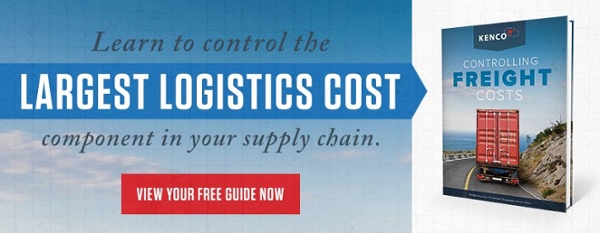It's no exaggeration to say that Uber and its industry peers have changed the way individuals get from point A to point B. Whether their patrons simply don't own a car, are visiting from out of town, or want a safe way to get home after a night on the town––the app-controlled cab alternative has become something of a household name.
While moving people comes with its own set of unique obstacles, parcels, pallets, and products have time and distance demands of their own. Can the "sharing economy" approach really work for both people and freight?
The emergence of "uberization"

How Does It Work?
As the saying goes about not fixing things that aren't broken, Uber has provided an insightful blueprint on how to "herd cats" to bring service providers and clients together. It all begins with a TMS, or transportation management system. In the case of Uber, that means displaying the whereabouts of nearby Uber drivers in real time, shown as small moving car icons superimposed on the smartphone app's built-in map.
This granular visual detail is likely unnecessary for shipping applications, but a pared-down version could still be useful; the "Uber for shipping" app Roadie displays a reversed version that shows willing transporters, available loads, and distance-to-destination data as map nodes.
Tracking vehicles and pickup availability used to require specialized equipment that formed a cost barrier to the sharing economy. However, smartphones have leveled the playing field to a degree, enabling freelancers to step into a gap that has long existed in the world of LTL, TL, expedited, and unusual freight.
Without the overhead shouldered by mainstream trucking and transport companies, clients now have a new option for one-off shipments in these same freelancers: an option that doesn't require their shouldering of those same business-sized overhead costs.
Why Is It Necessary?
The route to many an innovation tracks straight through the wallet and the Uber for shipping approach is no different. Setting up a TMS to manage shipments, sitting down with vetted carriers for negotiations, and constant checks to ensure both sides are remaining in contract parameters all cost precious time and money.
If shipping needs and volume aren't relatively uniform, the payoff might not match the payout. While traditional shipping solutions are unlikely to be usurped by this approach in the B2B sector in any lasting way, C2C shipping applications stand to benefit a great deal, particularly if those solutions capitalize on an existing fleet.
Proof of concept for moving freight with the same ease as people is easy to spot in the spread of auxiliary service apps, such as the aforementioned Roadie for over-the-road distance shipping. Grocery and food delivery services like

With the exception of Roadie, most deliveries are placed and completed within a few hours, a timetable that even traditional expedited freight would struggle to match in the B2B sphere.
What Are The Implementation Concerns?
Although there are challenges expanding beyond the consumer market, this concept does hold promise for B2B, as well: provided transportation managers want to make the shift.
Businesses would have to get comfortable stepping outside the usually known relationships with their carriers and be willing to place trust in a vetted network of freelancers, as opposed to company employees. For some companies, this is a huge step into the unknown, particularly if they've cultivated shipping provider relationships over decades, and scaled up accordingly as their business has grown.
Just as in the traditional taxi service, there are also regulatory and service concerns that pose as barriers to success. Freight requirements can include needs like temperature control, or require varying levels of insurance depending on the value of the cargo.
Driver requirements can demand endorsements like Hazmat or bulk endorsements on their CDL license, or that they adhere to NDAs for sensitive or secret equipment. Trucks may require a specific weight capacity, low clearance or a lift gate for delivery needs.
To properly realize Uber for shipping approaches, these specialty concerns would need to appear as filters in the user interface, just as they currently appear as selections in a TMS. Some version of oversight or vetting would need to be put in place to ensure that a freelance vehicle actually has the qualifications it claims to––or else the entire new system could become suspect and unreliable.
What Could Happen Next?
Believe it or not, the structure for this bold new approach to shipping is already firmly in place: you'd be hard-pressed to find a modern TMS that isn't based in the cloud, such as industry-popular MercuryGate. Any viable solution would need, like Uber, to appear on all operating systems––desktop-based Windows, Apple OS, Android, and more. The easiest transition would avoid (pun not intended) reinventing the wheel.
Instead, it would need to piggyback as an add-on to TMS interfaces to succeed as a freelance option for freight movement.
For trucking professionals, expansion of this concept could be a true boon, cutting down on empty miles and ensuring use of every square foot of trailer space. In turn, this could lessen the pinch of unavoidable costs like diesel fuel and truck maintenance by making the most out of every trip, and even justifying the expense of team driving to reduce liability––and improve on-time delivery and efficiency––on long-haul trips.
What Does It Mean For Your Business?
As customers and businesses alike clamor for faster and faster delivery, "in between" solutions like Uber for shipping may be a way to close the gap. With an increasing amount of transparency entering customer-facing shipping experiences, real-time tracking updates have replaced the "when?" with a resounding "where?"
If your customer can quickly and easily determine where their package is, they're less likely to tie up your customer service agents with questions on delivery; if automation is built into the system, that benefit is even more amplified.
Consider this: Uber could have easily coded their app to simply give customers a timed expectation for the arrival of their vehicle. However, overlaying the live, moving car icon adds an element of anticipation and planning that's obviously resonated successfully with their customer base. It's not a stretch to see the same effect when it comes to shipping.
You could decline to include this level of detail, of course, but the chances are that a competitor will not. Given a choice between the two, the modern customer would likely side with transparency. If you aren't the provider offering this transparency, your business growth could suffer.
To Sum It All Up
Knowing the true cost and effect of your shipping options is absolutely crucial to fine-tuning your efforts to maximize efficiency and satisfy your transportation needs.
If you're considering branching out into your own Uber for shipping journey, make sure that your potential path is well-illuminated with expert tips and knowledge. Thankfully, it's easy to expand your knowledge base and ensure better results.
Our transportation costs guide
*Update as of 5/18/2017 - Inc.com released an article stating Uber has officially launched Uber Freight*



